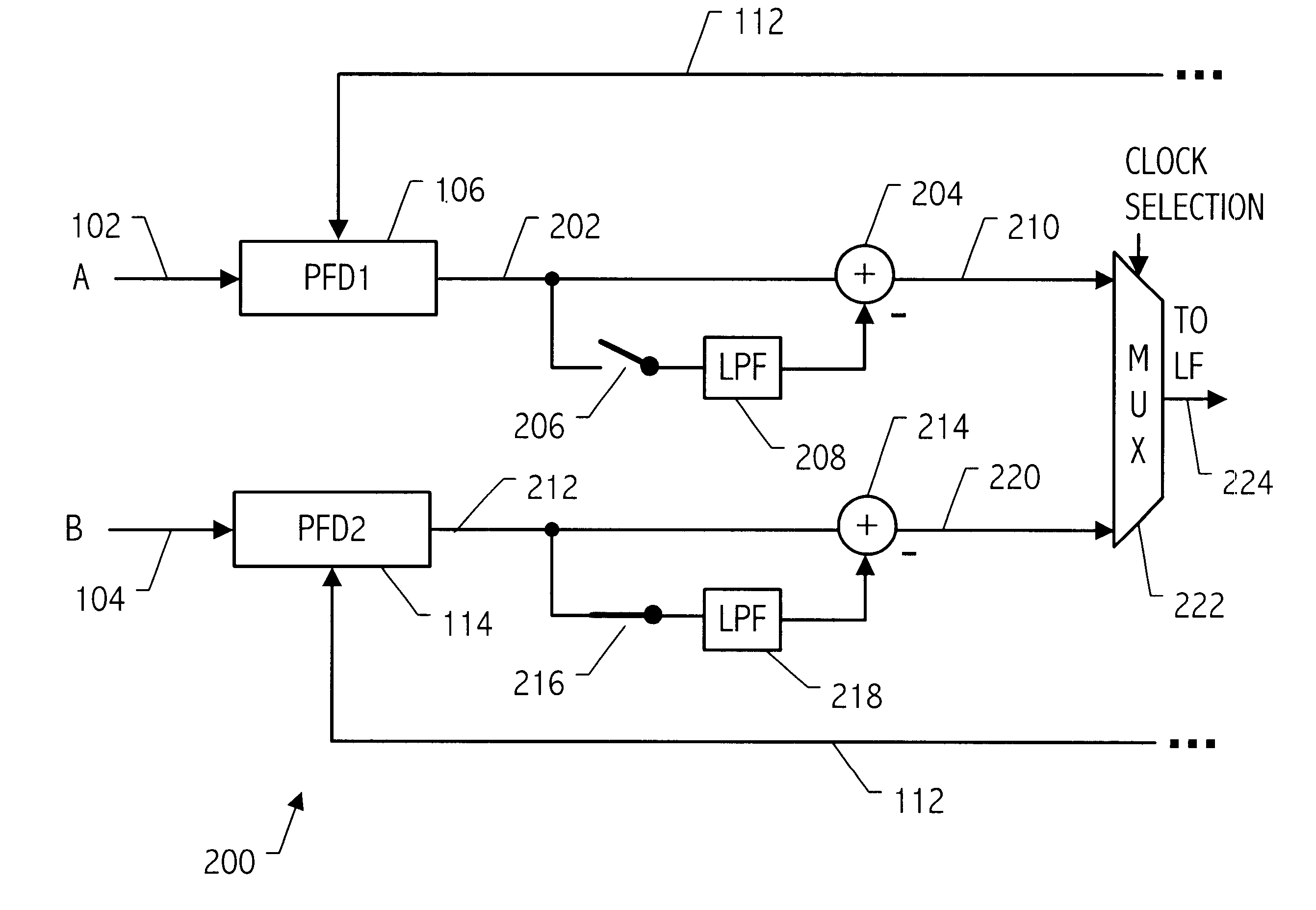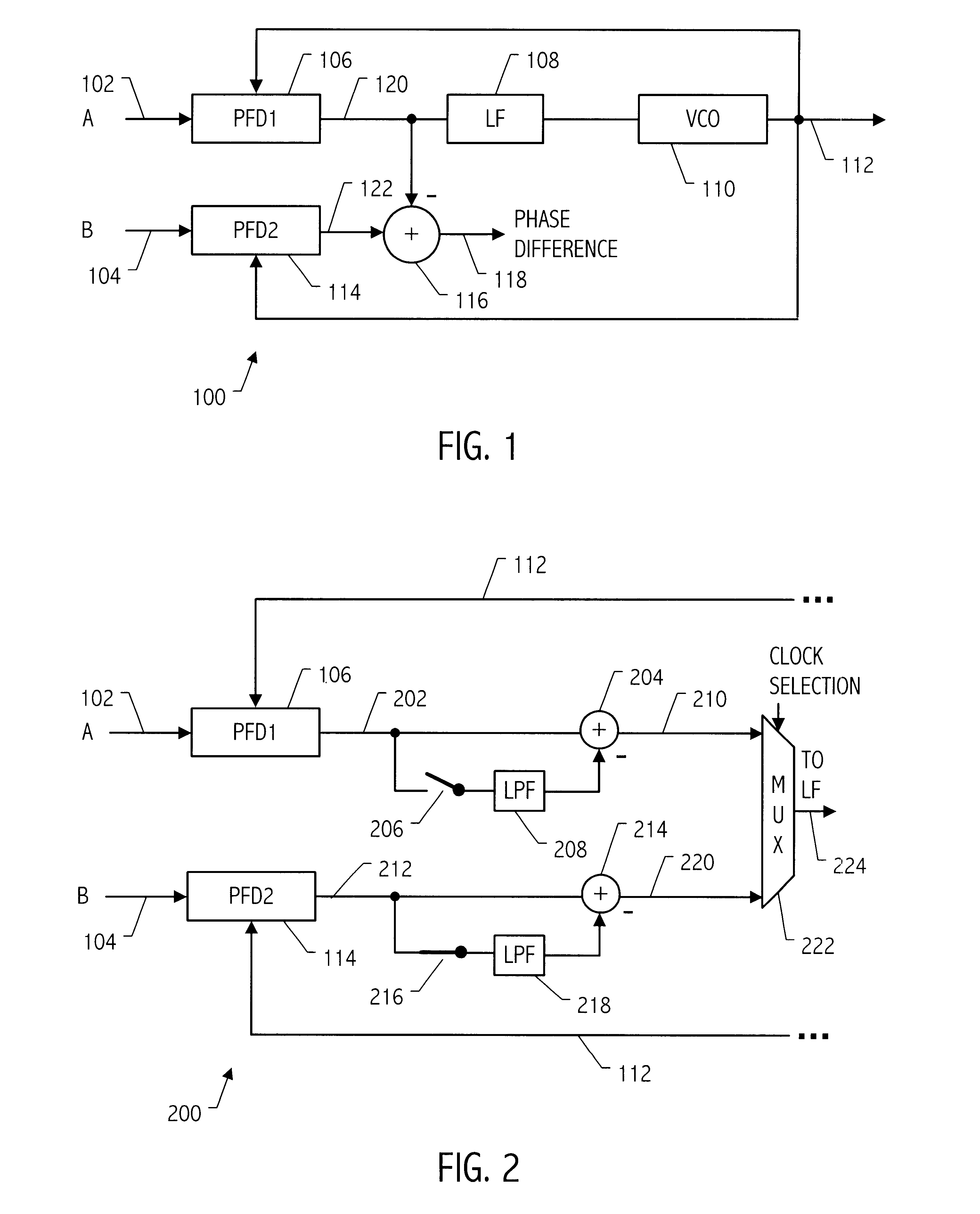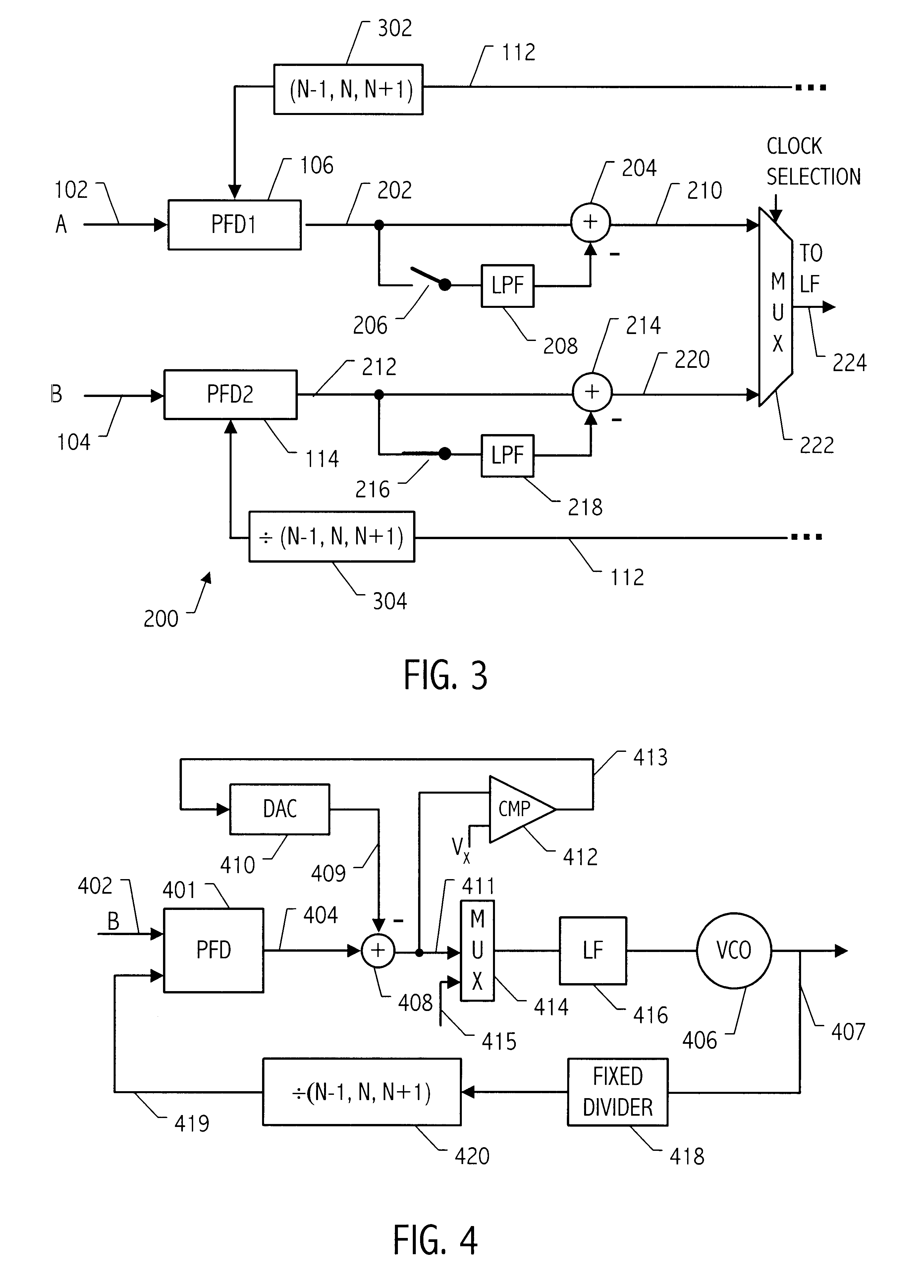Method and apparatus for switching between input clocks in a phase-locked loop
- Summary
- Abstract
- Description
- Claims
- Application Information
AI Technical Summary
Benefits of technology
Problems solved by technology
Method used
Image
Examples
Embodiment Construction
)
Referring to FIG. 1, a phase-locked loop (PLL) 100 receives two input clocks designated as clock A 102 and clock B 104, either of which may be utilized as the input clock by the phase-locked loop 100. Conceptually, the phase difference between the input clocks is monitored and stored. When an event occurs that causes the input clock being utilized by PLL 100 to switch, the known phase difference is utilized to compensate for that difference. As shown in FIG. 1, each clock input is provided with a phase / frequency detector 106 and 114 for monitoring the phase difference at any given time between the respective input clocks A and B and the PLL output 112. Phase / frequency detector 106 monitors the phase difference between the PLL output 112 and the input clock A 102 and phase / frequency detector 114 monitors the phase difference between the output 112 and the input clock B 104. A loop filter 108 and voltage controlled oscillator (VCO) 110 provide the remaining PLL functionality. Differe...
PUM
 Login to View More
Login to View More Abstract
Description
Claims
Application Information
 Login to View More
Login to View More - R&D
- Intellectual Property
- Life Sciences
- Materials
- Tech Scout
- Unparalleled Data Quality
- Higher Quality Content
- 60% Fewer Hallucinations
Browse by: Latest US Patents, China's latest patents, Technical Efficacy Thesaurus, Application Domain, Technology Topic, Popular Technical Reports.
© 2025 PatSnap. All rights reserved.Legal|Privacy policy|Modern Slavery Act Transparency Statement|Sitemap|About US| Contact US: help@patsnap.com



